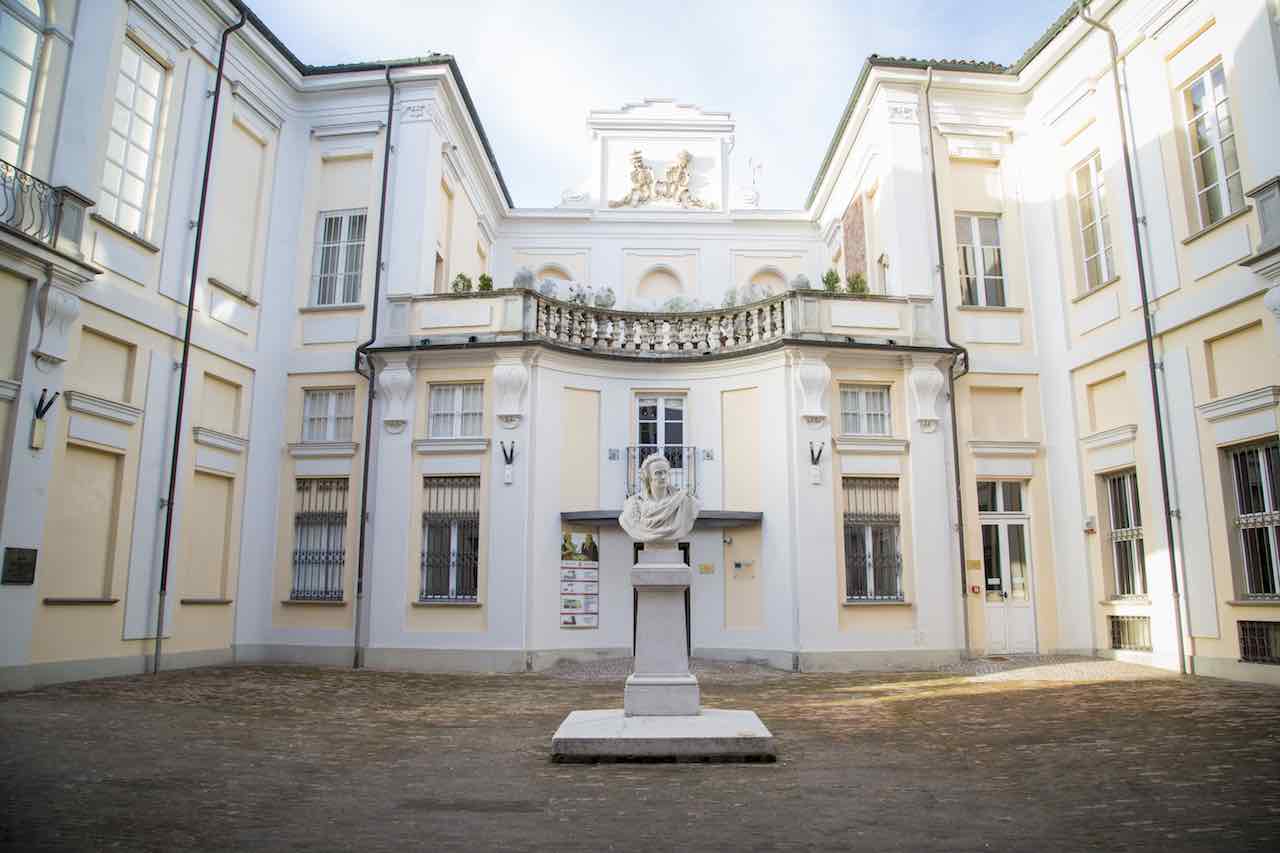Palazzo Alfieri Asti: Unveiling the Tapestry of Asti’s Cultural Evolution
Nestled in the heart of Asti, Italy, Palazzo Alfieri stands as a testament to the city’s rich cultural heritage. Stepping foot into this grand palace is like stepping back in time, as its tapestries and frescoes reflect the zenith of Asti’s cultural evolution. Visitors to Palazzo Alfieri can expect to embark on a journey through Asti’s history, uncovering the hidden gems that tell the story of this enchanting city.
As a symbol of Asti’s era of opulence and grandeur, Palazzo Alfieri holds great significance in the cultural landscape of the region. It served not only as a residence for the noble Alfieri family, but also as a hub for social and cultural life in Asti. Join us as we delve into the history and significance of Palazzo Alfieri, unraveling the secrets of this majestic palace that has stood the test of time.
Unveiling Asti’s Cultural Evolution: Exploring the Tapestries and Frescoes of Palazzo Alfieri
Palazzo Alfieri in Asti stands as a testament to the city’s rich cultural heritage and evolution. The tapestries and frescoes within the palace offer a glimpse into the zenith of Asti’s cultural development, showcasing the city’s artistic prowess and historical significance.
The tapestries found in Palazzo Alfieri are exquisite examples of craftsmanship and artistic expression. They depict various scenes from Asti’s past, including important historical events, vibrant festivals, and local legends. These tapestries not only serve as decorative elements but also as educational tools, providing visitors with a deeper understanding of Asti’s history.
Similarly, the frescoes adorning the walls of the palace are masterpieces that narrate Asti’s cultural journey. The vibrant colors and intricate details showcase the artistic skills of the craftsmen who created them. Visitors can expect to learn about the city’s past through these frescoes, as they depict significant moments in Asti’s history, such as the rise of influential families, the flourishing of trade, and the city’s architectural achievements.
Palazzo Alfieri stands as a symbol of Asti’s era of opulence and grandeur. The grand architecture, ornate decorations, and lavish furnishings all reflect the wealth and power that the city once possessed. The palace was built during a time when Asti was at the height of its economic and political influence, and its design and grandeur mirror the city’s prosperous past.
A Journey Through Asti’s History: Discovering the Hidden Gems of Palazzo Alfieri
Palazzo Alfieri stands as a testament to Asti’s rich cultural heritage, showcasing the city’s evolution and grandeur throughout history. As visitors step into the palazzo, they are transported on a journey through time, unraveling the hidden gems that hold the key to understanding Asti’s past.
One of the most striking features of Palazzo Alfieri is its collection of tapestries and frescoes. These intricate works of art not only adorn the walls but also serve as a visual representation of the zenith of Asti’s cultural evolution. The tapestries, meticulously woven with vibrant colors and detailed designs, depict scenes from Asti’s history, showcasing the city’s significant moments and the people who shaped its destiny. The frescoes, on the other hand, offer a glimpse into the daily life of Asti’s inhabitants, capturing their traditions, customs, and celebrations. Through these artistic masterpieces, visitors can truly appreciate the richness and depth of Asti’s cultural heritage.
A visit to Palazzo Alfieri is a gateway to Asti’s history. Each room within the palazzo tells a different story, enabling visitors to dive deep into the city’s past. From the grand halls adorned with magnificent chandeliers to the opulent bedrooms furnished with antique furniture, every corner reveals a piece of Asti’s historical puzzle.
How to buy Asti ticket museum?

Visiting museums in Asti is made simple with the Smarticket system. For €10.00, you can access multiple museums including Palazzo Mazzetti, Cripta di S. Anastasio, Palazzo Alfieri, Museo Guglielminetti, Domus Romana, and Torre Troyana. Discounts are available for seniors, students, groups, and residents of Asti. The museums generally operate from 10 AM to 7 PM, Tuesday through Sunday, with special openings in the summer months. Planning your visit in advance and understanding the ticket system will ensure a smooth and enriching cultural exploration of Asti.
From Opulence to Grandeur: Palazzo Alfieri as a Symbol of Asti’s Golden Era
Palazzo Alfieri stands as a magnificent testament to Asti’s golden era of opulence and grandeur. Built in the 17th century by the influential Alfieri family, the palazzo showcases the city’s cultural evolution at its zenith. From the moment visitors step foot inside, they are transported back in time to an era of lavishness and artistic brilliance.
One of the most striking features of Palazzo Alfieri is its collection of tapestries and frescoes. These intricate and exquisite works of art depict scenes from Asti’s rich history, highlighting significant events and influential figures. The tapestries, meticulously woven with vibrant threads, offer a glimpse into the artistry and craftsmanship of the period. Through these masterpieces, visitors can understand the importance of tapestry as a symbol of wealth and prestige during Asti’s golden era.
In addition to the tapestries, the frescoes adorning the walls of Palazzo Alfieri reveal the grandeur of Asti’s past. Painted by renowned artists of the time, these frescoes depict mythological and historical scenes, showcasing the city’s cultural and intellectual sophistication. Visitors can immerse themselves in the vibrant colors and intricate details of these frescoes, gaining insight into the artistic and cultural influences that shaped Asti during its golden era.
Palazzo Alfieri: A Pillar of Asti’s Cultural Landscape
Palazzo Alfieri, with its exquisite tapestries and frescoes, stands as a testament to Asti’s rich cultural heritage and represents the zenith of the city’s evolution. As visitors step foot inside this magnificent palace, they are transported back in time, immersing themselves in the history and grandeur of Asti.
The tapestries and frescoes that adorn the walls of Palazzo Alfieri serve as visual narratives, depicting significant events and themes from Asti’s past. These masterpieces not only showcase the artistic talent of the era but also provide valuable insights into the city’s social, political, and economic history. Visitors can expect to learn about Asti’s role as a prominent hub of trade and commerce during the medieval period, as well as its flourishing artistic and cultural scene. Palazzo Alfieri, with its opulent architecture and lavish interiors, serves as a symbol of Asti’s era of opulence and grandeur. Its construction during the 17th and 18th centuries reflects the city’s prosperity and the wealth of its noble families. The palace’s grandeur is further accentuated by the magnificent gardens that surround it, creating an ambiance of elegance and refinement.
In the cultural landscape of Asti, Palazzo Alfieri holds immense significance. It stands as a testament to the city’s artistic and cultural achievements, showcasing the talent and creativity of Asti’s artisans and craftsmen. Its presence not only enriches the architectural heritage of the city but also contributes to the preservation and promotion of
Palazzo Alfieri: The Epicenter of Asti’s Social and Cultural Life in the Past
In the rich tapestry of Asti’s history, Palazzo Alfieri stands as a testament to the city’s opulence and grandeur. This magnificent palace, located in the heart of Asti, served as the epicenter of the city’s social and cultural life during its heyday. Built in the 17th century by the influential Alfieri family, the palace not only showcases the family’s wealth and power but also reflects the zenith of Asti’s cultural evolution.
Visitors to Palazzo Alfieri can expect to be transported back in time as they explore its halls adorned with exquisite tapestries and frescoes. These artistic masterpieces provide a glimpse into the rich cultural heritage of Asti, revealing the city’s vibrant artistic scene during its most prosperous era. The tapestries, meticulously woven with intricate designs and vibrant colors, depict scenes from Asti’s history, showcasing the city’s significant role in the region.
Moreover, the frescoes adorning the walls of Palazzo Alfieri serve as visual narratives, recounting tales of Asti’s glorious past. These breathtaking works of art not only showcase the artistic prowess of renowned painters but also act as historical documents, capturing significant events and moments in Asti’s history. Visitors can expect to learn about the rise and fall of noble families, the city’s involvement in political affairs, and the influence of various cultural movements through these captivating frescoes.
In conclusion
Palazzo Alfieri in Asti stands as a testament to the city’s rich cultural evolution. Through its exquisite tapestries and frescoes, visitors can delve into Asti’s vibrant history and gain a deeper understanding of its past. The palazzo serves as a symbol of Asti’s era of opulence and grandeur, showcasing the city’s golden era in all its glory.
Furthermore, Palazzo Alfieri holds immense significance in the cultural landscape of Asti, acting as a pillar of its heritage and identity. In the past, the palazzo played a central role in the social and cultural life of Asti, acting as an epicenter for gatherings, events, and celebrations. Today, it continues to captivate and inspire visitors, offering a glimpse into the past and preserving the beauty and charm of Asti’s cultural heritage.





